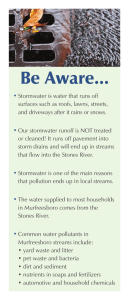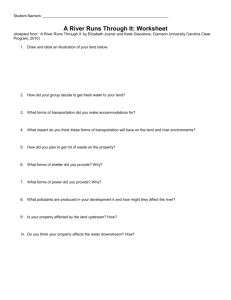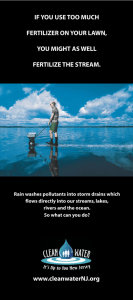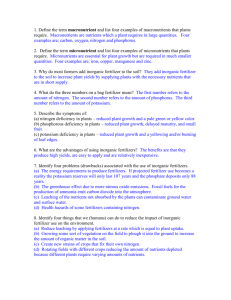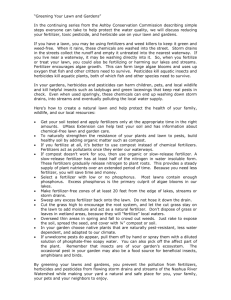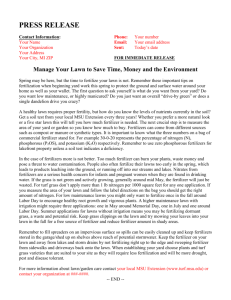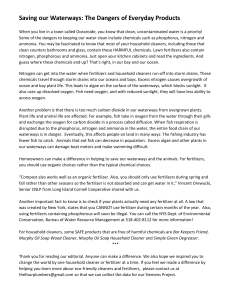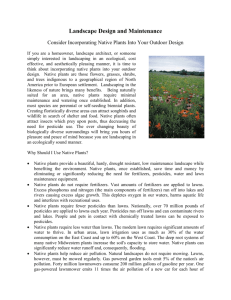Monthly Stormwater Tip – October 2014
advertisement
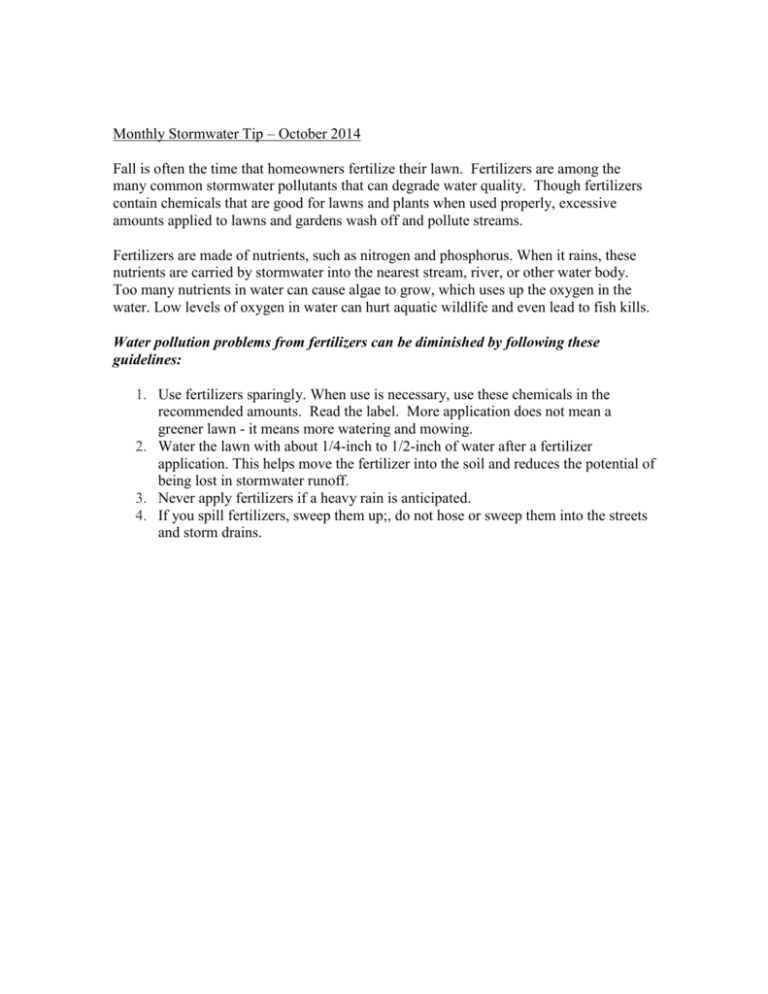
Monthly Stormwater Tip – October 2014 Fall is often the time that homeowners fertilize their lawn. Fertilizers are among the many common stormwater pollutants that can degrade water quality. Though fertilizers contain chemicals that are good for lawns and plants when used properly, excessive amounts applied to lawns and gardens wash off and pollute streams. Fertilizers are made of nutrients, such as nitrogen and phosphorus. When it rains, these nutrients are carried by stormwater into the nearest stream, river, or other water body. Too many nutrients in water can cause algae to grow, which uses up the oxygen in the water. Low levels of oxygen in water can hurt aquatic wildlife and even lead to fish kills. Water pollution problems from fertilizers can be diminished by following these guidelines: 1. Use fertilizers sparingly. When use is necessary, use these chemicals in the recommended amounts. Read the label. More application does not mean a greener lawn - it means more watering and mowing. 2. Water the lawn with about 1/4-inch to 1/2-inch of water after a fertilizer application. This helps move the fertilizer into the soil and reduces the potential of being lost in stormwater runoff. 3. Never apply fertilizers if a heavy rain is anticipated. 4. If you spill fertilizers, sweep them up;, do not hose or sweep them into the streets and storm drains.
